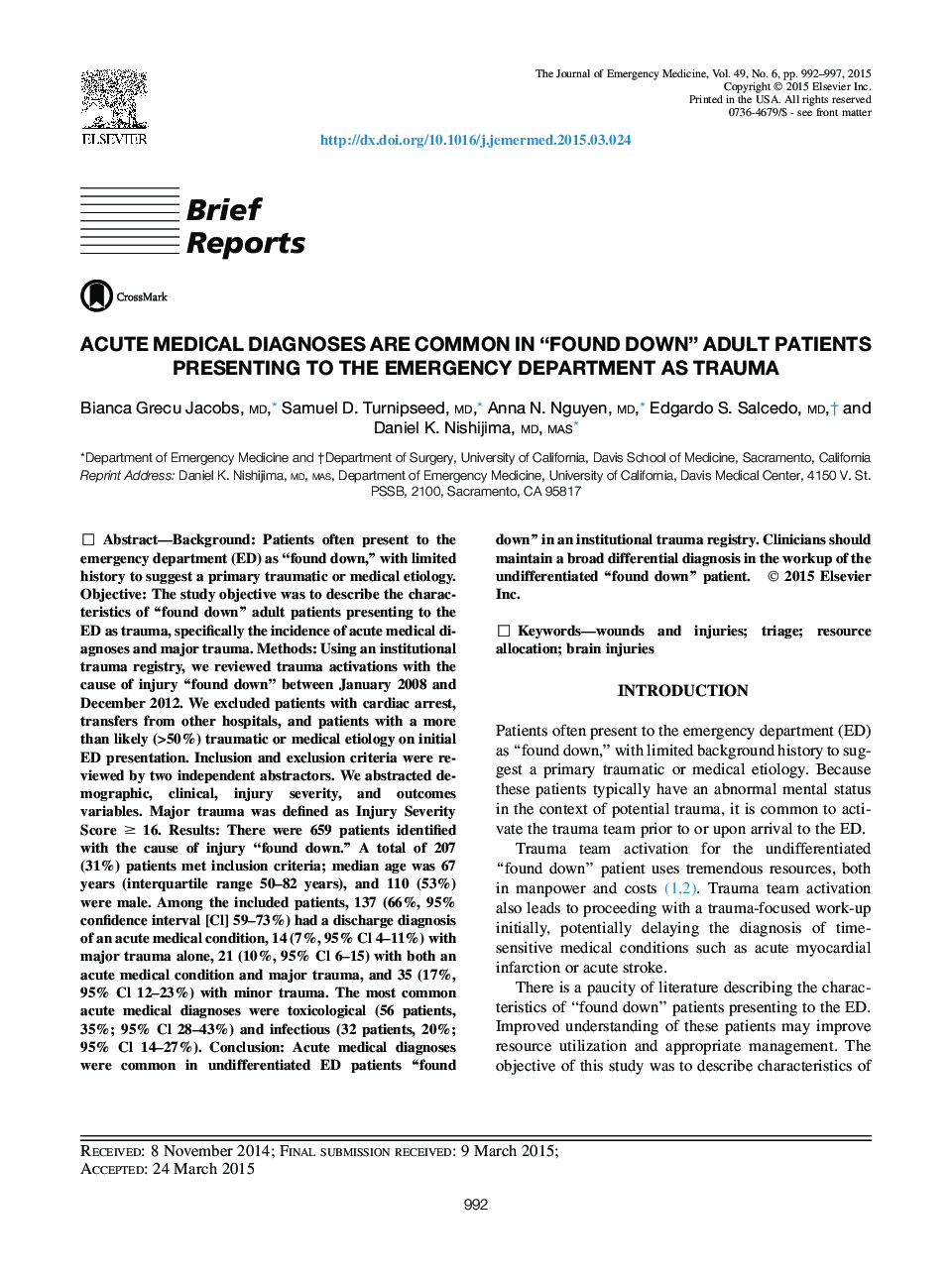| Article ID | Journal | Published Year | Pages | File Type |
|---|---|---|---|---|
| 3245981 | The Journal of Emergency Medicine | 2015 | 6 Pages |
BackgroundPatients often present to the emergency department (ED) as “found down,” with limited history to suggest a primary traumatic or medical etiology.ObjectiveThe study objective was to describe the characteristics of “found down” adult patients presenting to the ED as trauma, specifically the incidence of acute medical diagnoses and major trauma.MethodsUsing an institutional trauma registry, we reviewed trauma activations with the cause of injury “found down” between January 2008 and December 2012. We excluded patients with cardiac arrest, transfers from other hospitals, and patients with a more than likely (>50%) traumatic or medical etiology on initial ED presentation. Inclusion and exclusion criteria were reviewed by two independent abstractors. We abstracted demographic, clinical, injury severity, and outcomes variables. Major trauma was defined as Injury Severity Score ≥ 16.ResultsThere were 659 patients identified with the cause of injury “found down.” A total of 207 (31%) patients met inclusion criteria; median age was 67 years (interquartile range 50–82 years), and 110 (53%) were male. Among the included patients, 137 (66%, 95% confidence interval [Cl] 59–73%) had a discharge diagnosis of an acute medical condition, 14 (7%, 95% Cl 4–11%) with major trauma alone, 21 (10%, 95% Cl 6–15) with both an acute medical condition and major trauma, and 35 (17%, 95% Cl 12–23%) with minor trauma. The most common acute medical diagnoses were toxicological (56 patients, 35%; 95% Cl 28–43%) and infectious (32 patients, 20%; 95% Cl 14–27%).ConclusionAcute medical diagnoses were common in undifferentiated ED patients “found down” in an institutional trauma registry. Clinicians should maintain a broad differential diagnosis in the workup of the undifferentiated “found down” patient.
